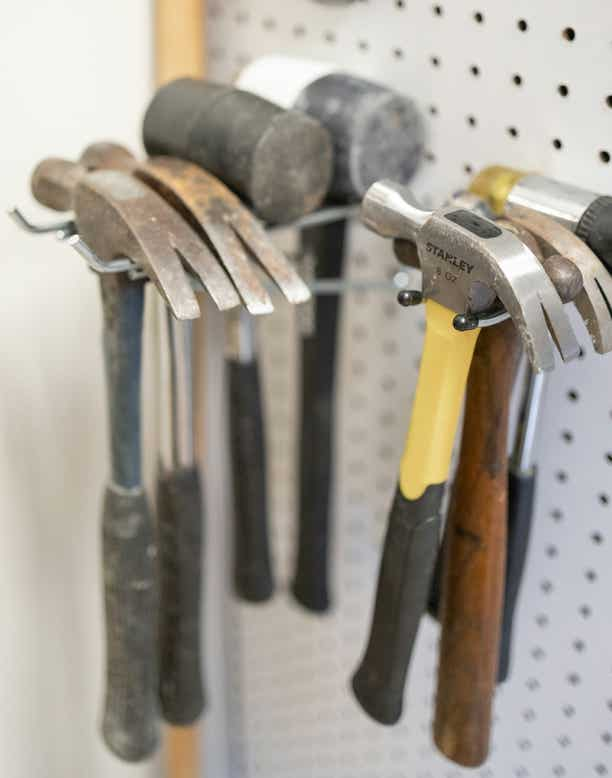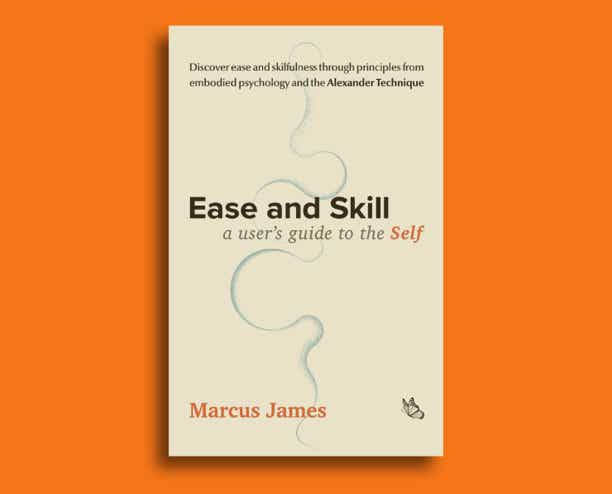Technique, Values and Kinemotional Experience
05 January 2020, updated May 2024
View a printable PDF of this Article
One’s certainly different when one comes up out of monkey.
—Marjorie Barlow (2002)
Apparently we Alexander teachers are passing on a ‘technique’. At least that’s what it says on the tin. But I think some of us have a nagging discomfort at this way of characterising what we’re up to. We may feel that the sort of explicit, procedural, codified approach that the word ‘technique’ implies no longer quite fits what we do. Perhaps we feel a little lumbered with it. A teacher recently told me she was thinking of changing the name of what she teaches to ‘Alexander Work’. I can sympathise with that.
One appealing thing about the word ‘Technique’ is that it gives an impression of something simple, straightforward and contemporary—a neutral method you can use to solve your problems. It’s tempting to think of techniques as being pure things which are culture and value-free, and can be applied in an uncomplicated way to the world or to ourselves to make hoped-for changes for the better. But though this is a nice thought, it’s not really true. Techniques are invented by human beings who exist within cultures. They arise in specific cultural contexts in response to certain specific needs and values. Inevitably they embody those needs and values in some way.
Think of the technique of hammering wooden boards together with nails. To engage in such a process requires certain things. Firstly, hammers, nails, and milled timber. The existence of these implies the existence of physical and mental toughness in the culture—the courage and fortitude required to win metal ores from deep underground, inventiveness, a willingness to cut down beautiful trees and harness the power of water or fire to make tools and to shape raw materials. They require not only the culture’s acceptance of, but also to some extent its valorisation of, such things as hard work, division of labour, focus, determination, the over-riding of physical discomfort, and the domination of the natural world in pursuit of its own ends. A certain brutality even. These things may take very harmful or relatively benign forms, but they are an inherent part of the activity of hammering boards together to make buildings and other structures. You can’t have one without the other. The American West was dominated, and the native people driven out as much with the hammer and nail as anything. It’s a simple technique, but it’s hardly value-free.
If we’re involved with hammering nails we know this—perhaps only unconsciously—and feel the presence of the back story. When I use a hammer skilfully I feel—literally, physically feel—‘like a man’ in a way many in my father and grandfather’s generation would have understood and related to. It’s a good feeling—competent, independent and strong—matched by the sensation in my body of skilfully controlling a metal tool, and perhaps a sense of continuity and identification with previous generations of craftsmen.
Learning and applying a physical technique gives us a set of kinaesthetic and emotional experiences which we come to identify with. To use a hammer feels like this or that in my body, and that feeling is accompanied by a sense of the values associated with the activity and the emotions that accompany them. This sense of how we feel kinaesthetically in activity is an important part of how we know we exist as a being. ‘There’s this feeling, it is familiar, I know it, it is part of me’. Hammering becomes a part of my identity. There’s an emotion and there is a kinaesthetic experience, and these form a gestalt, which I call a *kinemotional experience*.
Kinemotional experiences are not additional to technique, they are part and parcel of it. As we learn to hammer wood and nails efficiently (i.e. with the speed and accuracy needed to make wooden buildings economically feasible) we are absorbing not only a technical skill but a particular cultural history and set of values. Even if we dislike hammering nails and resent it, or if we are a woman taking possession of what was traditionally a male-dominated skill, we are still in dialogue with this history and culture and those values.
Let’s bring this back to the Alexander Technique. As a member of the Alexander teaching community who is passing the work on to others, I might like to think I'm engaged in a relatively value-neutral activity, un-complicatedly helping people to fix their bad backs, or to be better at their chosen artistic pursuits. But I might also wonder what values and experiences are lurking in the work which I may be passing on at the same time without fully noticing.
Firstly, the Technique (in its classical formulation at least) encodes enlightenment and modernist ideas about the pre-eminence of reason and order in human affairs. These are impossible to separate out from the work, they are literally what it is. It also contains an assumption that refined—as opposed to good enough—skill is important, valuable, and worth pursuing at the expense of other things we might do with our time and energy.
More subtly, however, the Alexander Technique in its classical form also encodes a sense of the value of certain ways of experiencing ourselves. It encodes certain kinemotional experiences which were experienced as desirable and high-status at the time the Technique was formulated. For example, if I work in the rather formal, disciplined, procedure-based way I was trained, I tend to feel rather like F.M. looks in some of the well-known photographs: a little regal, very certain and clear, kind but rather uncompromising, with a sort of restrained power—and I find those feelings and ways of being reflected in many of the writings and descriptions of the early teachers. When I play at being a classical Alexander teacher, which I like to do from time to time, I feel like a ‘man’ rather in the way Arthur Rubinstein looked like a man as he lifted his hands to begin a Beethoven sonata. All of which, it has to be admitted, has a certain appeal. There’s a lot to be said for it. It’s nice to feel that way. When I came across the Technique many years ago it was astounding to feel such power and authority in myself and, in certain circumstances, to be able to project it in a way that landed with other people. What a revelation!
There’s a lot of sense and sound reasoning behind the classical Alexander Technique procedures which became canonical. But, at the same time, these particular ones would also have been settled on because they tend to produce and promote the kind of kinemotional experiences that were considered desirable at the beginning of the twentieth century, and which conferred advantages in the cultural context in which the Technique evolved. We may admire our teachers and experience a moving sense of community and historical continuity through our involvement in the work, but all this additional baggage can easily become attached to what we are learning. We come to ascribe some kind of *absolute* value to the new experiences of self we are having while believing them to be culturally neutral. ‘This is “good use”’, we think. ‘This is what it’s like to experience how humans are *supposed* to be’, when in fact these experiences are deeply conditioned, intertwined with cultural and kinaesthetic experiences embodied in the particular poses and movements which were valued by F.M. and the second-generation teachers.
This is all absolutely fine, of course, if it’s what you want. For my part though, I’m not sure it really *is* what I want. For a start, I’m very much drawn to *not* being too technical in what I’m up to. There’s a lot to be said for exploring the principles with ourselves and others while avoiding letting what we are doing solidify too much into technique. Of course there will always need to be something of that. A little bit is quite alright. But my experience is that when I play with the principles in less formal, disciplined, technical ways, I experience myself rather differently to the regal Alexander teacher of old. I seem to become rather more intimate with myself and others: closer, more flexibly boundaried, more equal, more yielding, more in-tune-with. I become less concerned with ‘up’, and more concerned with flow. Less bothered about widening and more interested in openness. And for me this has a sense of rightness and of something more fitting for the particular times and challenges we face as human beings at this point in our shared history.
References
Barlow, M.A., Davies, T.A., (2002). *An examined life: Marjory Barlow and the Alexander technique : in conversation with Trevor Allan Davies*. Mornum Time Press, Berkeley, Calif.
Copyright © 2020, 2024 Marcus James

